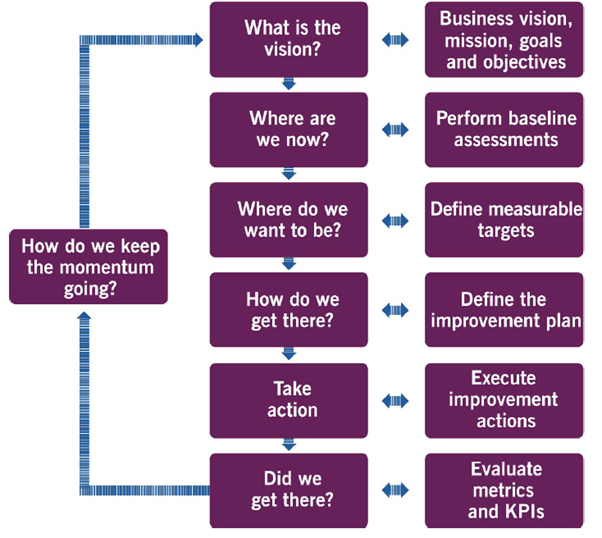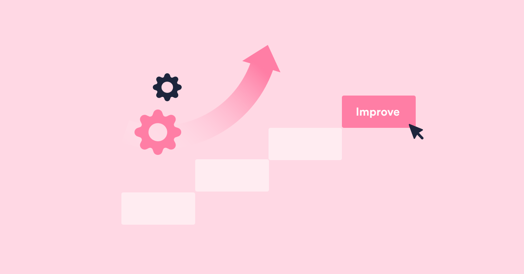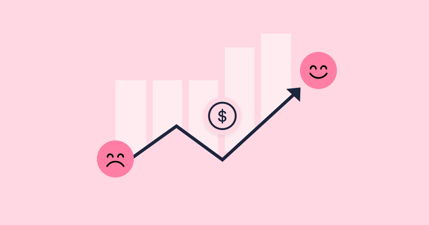You might not have stopped to think about this before, but IT service management (ITSM) is all about improving, with various ITSM capabilities adopted and refined to serve business needs better. This improvement can cover many elements of ITSM, including services, operations, experiences, and outcomes – i.e. more than the provided IT services. This is why AXELOS renamed the ITIL v3/2011 continual service improvement (CSI) process to continual improvement in ITIL 4.
The need to drop “service” from CSI might seem obvious, but some people still question why ITIL calls this corporate capability “continual improvement” rather than “continuous improvement.” This query is answered along with many others as this blog explains what continual improvement is.
Continual versus continuous improvement
An easy way to distinguish between continual and continuous is to think of continuous as a ramp and continual as a flight of stairs. Both proceed upward, but the stairs do so incrementally. Continual improvement, then, is improvement done in a series of steps, each step rising from the level of the last. However, given that we could climb either a ramp or flight of stairs to reach a higher level, why would we do the steps rather than the ramp?
The answer is that the steps allow us to plan and assess – to check that the progress is as expected. And to assess properly, we need data in the form of feedback. The better our data is when we make an assessment, the better our decisions about when and how to proceed will be.
Whether we look at the Three Ways of DevOps, the Deming PDSA (or PDCA) Cycle, or the ITIL 4 Guiding Principles for Continual Improvement, we see the same approach: Plan and take a step, then check to see how you’ve done before taking the next.
So this is why ITIL, in particular, points organizations to continual rather than continuous improvement, but you might still be wondering what it is.
What continual improvement is
The ITIL 4 purpose statement for continual improvement brings out the aforementioned need to focus on more than services:
“The purpose of the continual improvement practice is to align the organization’s practices and services with changing business needs through the ongoing improvement of products, services, and practices, or any element involved in the management of products and services.”
Source: AXELOS, Continual Improvement ITIL 4 Practice Guide (2020)
This purpose statement is an evolution of the ITIL v3/2011 CSI definition that merely pointed to the improvement of services:
“Continual service improvement ensures that services are aligned with changing business needs by identifying and implementing improvements to IT services that support business processes.”
Source: AXELOS, ITIL 2011 Glossary
Continual improvement is more than a process
While the ITIL 4 guidance provides a continual improvement model and process, as shown below, it’s important to appreciate that continual improvement is so much more than simply following the process. It’s part of the overall ITIL 4 guidance approach that AXELOS designed to elevate adoption thinking beyond each service management process such that organizations see a broader practice, or capability, that requires so much more than simply “putting tab A into slot B.”
The ITIL 4 Continual Improvement Model

Source: AXELOS, Continual Improvement ITIL 4 Practice Guide (2020)
To help organizations, the scope of the ITIL 4 continual improvement practice includes guidance across a range of important areas, including:
- The culture change required for continual improvement success
- The need to embed continual improvement in the organization
- Various improvement approaches and methods
- Improvement success measures
- The importance of feedback loops.
Where to focus your IT organization’s continual improvement
I’m sure no IT organization has an unlimited budget, and time, available for continual improvement. It’s therefore essential to focus what will likely be limited continual improvement resources on where any change will make the most significant difference.
The advice is commonly to look for “pain points” as shown up by service-related complaints, reported application issues, or where end-users consider software or hardware unfit-for-purpose. Or an IT organization might look to improve how they deliver services and support based on industry best practices and technology advancements, including for process optimization.
There are likely many opportunities for your IT organization to improve across services, operations, experiences, and outcomes. However, the key to continual improvement success is, first, understanding how to prioritize the opportunities successfully and, second, ensuring that the changes made have the expected positive impact.
In some ways, this is the need to focus on “the right things” aligned with the aforementioned feedback loops. The notion of focus is also important from a work-in-progress (WIP) perspective. Because the business might not see the benefits of the in-flight improvement initiatives until completed, only the costs. So don’t overstretch with continual improvement by allowing too many improvement initiatives to get stuck in a WIP state.
Avoid the two harmful continual improvement pitfalls
These relate to the two “keys” mentioned in the previous section. The first is an extension of the need to prioritize the limited improvement resources on the right things. This isn’t only avoiding the age-old issue of inadvertently focusing on the problems of “the people who shout loudest” but also ensuring that improvement opportunities aren’t missed through the use of unsuitable metrics or ineffective feedback mechanisms.
The second is ensuring that IT-felt improvements don’t adversely affect value. This pitfall when improvement activity related to IT activities delivers no value to business operations and outcomes. Or it might destroy business value. A good example is where an IT service desk is targeted to shorten the incident lifecycle to save money without appreciating that the adverse business impact of the “improvement,” in terms of end-user productivity, far outweighs the IT savings.
Using end-user feedback to identify and assess improvements
Hopefully all organizations want to continually improve and, importantly, in terms of what matters most. It’s why focusing on experience management, including the levels of employee lost productivity, is important. This experience data means that they have their “finger on the pulse” of how well IT is helping or hindering end-users. They can see the issues that end-users face and the reasons why and how their improvements are changing things for the better (and when they're not too).
If you’d like to learn more about how experience data will help your continual improvement efforts and results, then why not sign up to watch this upcoming Happy in 15 episode: How to use ITXM™ to Identify improvement areas in IT.





